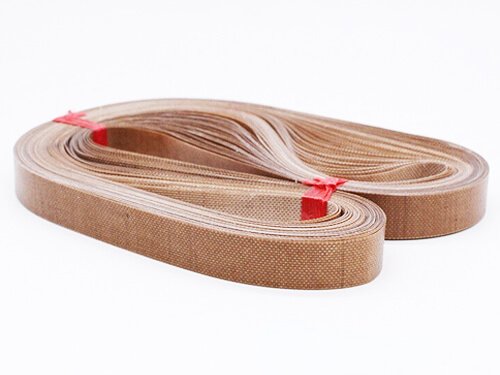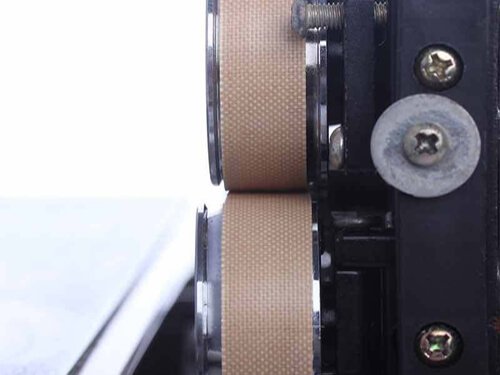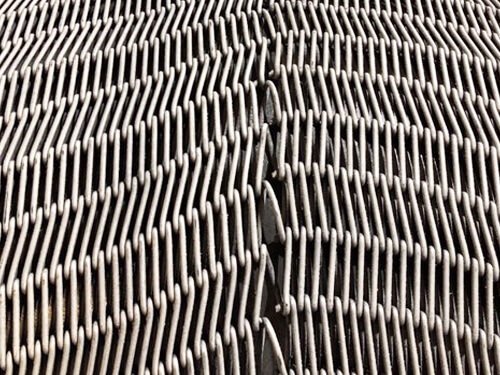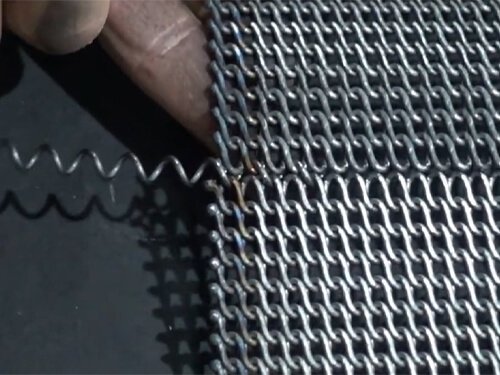1. Selection of Raw Materials
The journey of creating PTFE heat sealer belts begins with the selection of high-quality raw materials. The primary components are fiberglass yarns and polytetrafluoroethylene (PTFE), a type of polymer. Fiberglass is chosen for its exceptional strength, durability, and heat resistance. PTFE, on the other hand, is favored for its non-stick properties and ability to withstand high temperatures. The quality of these materials directly affects the belt’s performance, making it crucial to source from reputable suppliers.


2. Production Process
The production of PTFE heat sealer belts involves several meticulous steps:
- Weaving: The process starts with weaving fiberglass yarns into a fabric. This fabric forms the core structure of the belt, providing it with mechanical strength and dimensional stability.
- PTFE Coating: Next, the woven fiberglass fabric is coated with PTFE. This is typically done through a process called impregnation, where the fabric is soaked in a PTFE dispersion, allowing the polymer to penetrate the fibers thoroughly.
- Curing: After coating, the fabric undergoes a curing process in a high-temperature oven. This step is crucial for bonding the PTFE coating to the fiberglass fabric, enhancing the belt’s heat resistance and non-stick properties.
- Cutting and Finishing: The cured material is then cut to specific widths and lengths according to the requirements of the heat sealing application. Edges are often sealed or reinforced to prevent fraying and ensure a longer service life.
3. Performance Characteristics
PTFE heat sealer belts are renowned for their exceptional performance characteristics:
- Heat Resistance: They can withstand continuous exposure to high temperatures, often up to 260°C (500°F), making them ideal for heat sealing applications.
- Non-Stick Surface: The PTFE coating provides an excellent non-stick surface, preventing sealing materials from adhering to the belt.
- Durability: The combination of fiberglass and PTFE results in a belt that is highly durable and resistant to wear, tear, and chemical attack.
- Flexibility: Despite their strength and durability, these belts are also flexible, ensuring smooth operation and easy installation on equipment.
4. Application
PTFE heat sealer belts are widely used in various industrial applications, including:
- Packaging: They are essential in the packaging industry, particularly in machines that seal plastic film to form bags and pouches.
- Food Processing: Their non-stick and heat-resistant properties make them suitable for food processing applications, such as in ovens and conveyor systems.
- Textile and Printing: Used in textile and printing machinery, these belts facilitate processes that require high temperatures and precision.


In conclusion, PTFE coated sealer belts are integral components in industries that require durable, high-performance sealing solutions. Their construction from high-quality materials, combined with a specialized production process, results in belts that offer outstanding performance and versatility across a range of applications.






